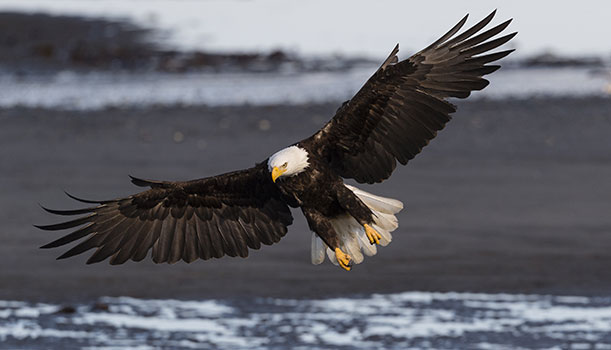BOOMbox at Home: All about Flight
March 3, 2021

During spring, we're exploring the four elements of earth, air, fire, and water. This week, learn more about air and the many different ways to fly.
Animals
There’s more than one way to fly. Some “flying” animals, like flying squirrels, are actually gliding. Flying animals provide their own lift, whereas gliding animals are really just "falling with style." Even among flying animals, there are some significant variations. Consider birds and bats. Both birds and bats fly by flapping their wings, and, at first glance, there don’t seem to be very many differences in their flight styles. However, there’s much more going on than initially meets the eye.
Bird wings are kind of like arms. The motions a bird uses to fly are a lot like the motions you might make while swimming. Birds have hollow bones and lightweight feathers. Their wings don’t have joints, and they reduce air resistance by adjusting how the wind flows through their feathers. Bat wings are more like hands. Most of a bat wing is made of the flexible skin between "fingers." While we normally think of skin as a covering, the skin in a bat’s wing is full of small muscles. Like the joints in your fingers, bats have joints in their wings. In fact, they even have flexible bones. Combined, this means that bats can significantly change the shape of their wings as they fly.
You can imagine bird bones like uncooked penne pasta noodles and bat bones as cooked spaghetti pasta noodles. The penne is hollow inside but not very flexible. The spaghetti is more dense but more malleable or movable. There are lots of ways you can wiggle it without it breaking.
Each type of wing has an advantage. Birds fly faster, can take off from the ground, and can walk. Bats have much more maneuverability in the air and use less energy, but may need to take off from a higher starting point and typically struggle to walk. Learn more about the differences between bat and bird flight.
Birds and bats aren’t our only flying friends. Try researching how insects fly. Hint: can you figure out what flies have in common with drones? Once you’ve seen even more ways to fly, take on the design challenge of inventing your own flying creature. It can be as realistic or fantastical as you’d like. Describe what your creature looks like, where it lives, what it eats, and how it flies. Then ask yourself: what are the pros and cons of its flight method?
Machines
Thanks to technology, humans have multiple ways to fly, too. From helicopters to planes to rockets, there’s lots to learn about the engineering of flight. Try making a paper helicopter and a paper airplane. What differences do you notice? Does either remind you of things you’ve seen in nature? Can you think of any changes you might make to improve your designs? Compare a few different versions to see which flies best.
Paper airplanes are essentially gliders. Their design has a big impact on how they move in the air, but they depend on the force of your throw to get moving. Real planes use some of the same design principles to move smoothly through the air, and they produce their own lift with their engines. It takes a lot of training and skill for pilots to safely control real planes. You can get a taste of what piloting a plane is like from the safety of your home with this flight simulator, which has models of several different planes as well as several different airports around the world. Try a few different types of planes. What similarities and differences do you notice?
Flying through space has even more complications than flying a plane. A spaceship needs to fly much farther than a plane and needs to handle the conditions of Earth’s atmosphere, the vacuum of space, and everything in between. How do you think designing a rocket might be different from designing a plane? What about piloting? If you’re looking for an additional challenge after playing the plane simulator, check out this ISS docking simulator, based on the actual controls used by NASA. To successfully dock, you’ll need to be patient and make many precise adjustments, so this challenge is best suited to older kids or adults.
Scientist of the Week
Sharon Swartz is a professor of biology and engineering at Brown University. Her research focuses on aeromechanics and evolutionary morphology, which is how bats fly. Her research can help us understand how animals evolve, how different wing structures lead to different flight methods, and how to better treat shoulder problems in humans.
Written by Eli and Pam.